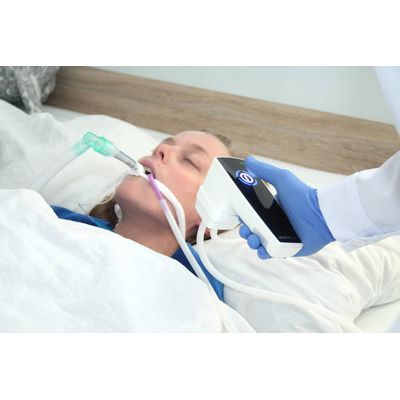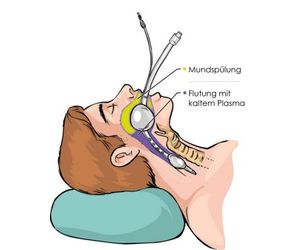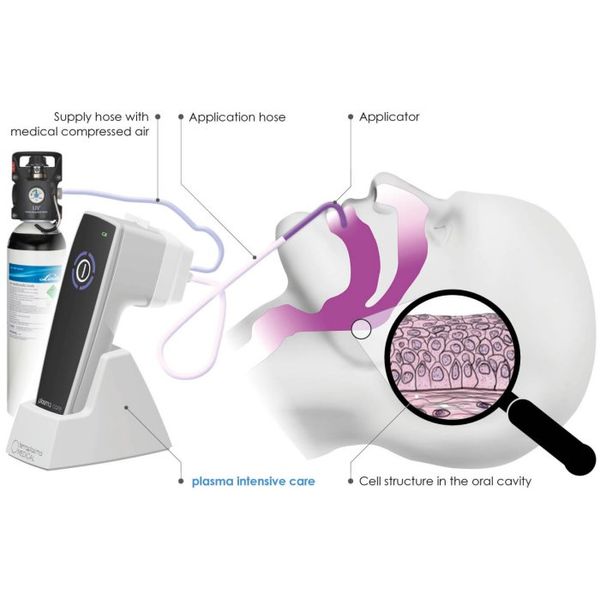

- Home
- Companies
- terraplasma medical GmbH
- Products
- Ventilator-Associated Pneumonia (VAP)

Ventilator-Associated Pneumonia (VAP)
Cold plasma against ventilator-associated pneumonia. Our current research project - new ways of oral hygiene in intensive care: Simple, fast, clean. Ventilator-associated pneumonia (VAP) is one of the most common and dangerous complications of mechanical ventilation. VAP can be an autoinfection with germs from the patient’s gastrointestinal tract or an exogenous infection with germs from the immediate patient environment. The pathogen spectrum is broad and includes mainly gram-negative bacteria. Over time, the germs can get into the lower respiratory tract and can lead to VAP.
Cold plasma has a strong antimicrobial and antiviral effect, sparing human tissues and cells. This effect also exists in bacteria with antibiotic resistance (MRSA).
- CAP gently floods the pharynx, also comes to hard-to-reach places and also reaches the nose.
- No use of aggressive solutions, no suction, no tooth discoloration.
- CAP enables the reduced use of antibiotics.
- CAP is a physical treatment method without the development of resistance.
- CAP reduces the risk of infection of medical personnel because it is used from a safe distance. No manual work near the mouth.
- Treatment can also be carried out in patients with pacemakers.

In the following, the application of the device is shown schematically. Cold plasma is generated and gently directed through the mouth into the upper respiratory tract of the ventilated patient with the help of medical compressed air.
The device is used exclusively in intubated or tracheotomized patients and the entire respiratory tract above the cuff is treated.

For oral care in invasively machine-ventilated patients (in back position) with plasma intensive care, the following infrastructure is required:
- Flowmeter
- medical compressed air
- The adapter of the plasma intensive care is placed on the device.
- Plug the hoses (application hose 1.5 m and supply hose 2.0 m) onto the adapter.
- The supply hose is connected to the flow controller (gas flow 0.5 l/min).
- Connect the purple applicator to the application hose.
- In order for the applicator to be positioned appropriately in the patient’s mouth, it must first be bent accordingly.
- Place the applicator in the patient’s mouth.
- Start CAP treatment via the touch button. The device stops automatically and can be discarded during treatment.
- After completion of treatment, remove the applicator from the mouth, disconnect from the application tube and dispose of.
